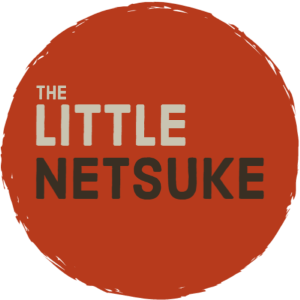Practise makes perfect. This saying is true for all skills, language acquisition included. But how should you practise? While there are many ways to practise a language, some are more effective than others.

In this post we’ll review the importance of reading, barriers to reading in Japanese and roundoff with some beginner recommendations. I have chosen three Japanese book series that are a great place to start for middle-beginner to pre-intermediate level students.
Feel free to jump straight to the recommendations using the links above.
Why should I read in Japanese?

Over the years a lot of research has been done on this topic and the results are striking.
An extensive reading programme was trialled in a number of Pacific nations. Studies of the trial showed that after a year, students in the programme saw greater improvement that other students in reading and word recognition.
So far, so good, but it is far from earth shattering to link increased reading practise with improved reading and vocabulary skills.
However, it was the results in the next year that were particularly remarkable. After two years, participating students had greater improvements in all language skills. Not just reading, but listening, writing, grammar, vocabulary etc.
This study and many others have shown that more reading reaps higher language proficiency.
Other studies have gone on to show that motivation and diverse material are also important factors in the success of any extensive reading strategy.
Unfortunately, there’s a problem for beginners of languages like Japanese.
Regardless of willingness, motivation or access to material the written language presents a seemingly impenetrable barrier not present for languages that use the roman alphabet.
How to overcome the reading barrier?

Finding any material a Japanese beginner can read, let alone wants to read, can be tough. Even after having gained a good grammar or vocabulary foundation it can be a challenge. Some students even decide not to attempt to become literate in Japanese.
But taking this course means you’ll miss out on the benefits, so it may take you even longer to gain proficiency in other areas of the language.
For reading in Japanese, kanji are the main barrier. One solution is to use graded readers, and there are some great ones out there. These short stories are written with the beginner in mind and avoid excessive kanji or complex grammar and vocabulary.
But sooner or later you will need to tackle material not written with a foreign learner in mind. In my opinion, sooner is better. In fact, when I started reading in Japanese, even graded readers were too difficult.
My solution was to work my way up starting with picture books, which can have anywhere up to 1,000 words. Then progressing to online resources, graded readers and books for elementary school students.
This allowed me to climb the ladder to novels and non-fiction writing for native adults. What’s more, I had fun and avoided the extreme frustration that you can experience when attempting material way beyond your level.
I discovered that being able to read books written for elementary school students was an important milestone. These books are fantastic resources for two reasons.
First, they are written for an audience who are fluent in Japanese, but can’t read kanji. Reading these books introduces you to more grammar and vocabulary while also giving you time to chip away at the kanji mountain.
Second, publishers commonly use some sort of system to identify whether a book is best for lower, middle or higher elementary school ages. These systems can be invaluable when identifying material at your level.
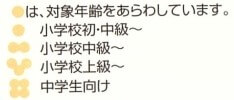
Why read a book series?
As mentioned above, I have recommended three Japanese book series for the pre-intermediate learner. I have chosen three series over three stand-alone books for good reason.
When starting a new book by an unfamiliar author the first few chapters are the hardest. As you become familiar with the author’s style and vocabulary it gets easier.
If you were to read only stand-alone books, you would have to repeatedly start this process all over again. While exposing yourself to new language is good, it will lower your reading speed, so you will read less and be exposed to less Japanese.
When reading a book that is part of a familiar series, you are able to read more fluently. This means you’ll be able to read more and so expose yourself to more of the language.

Of course, there is a balance and you should progress to a new series before the language becomes too easy. Luckily, the three series I recommend here offer a good progression to help you push your skills further.
Right, let’s get into it.
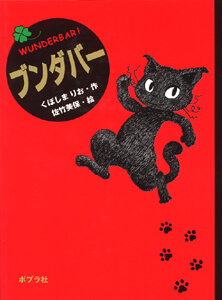
ブンダバー
This first recommendation is a series that ran from 2001 to 2012. In fact, it is actually two series. ブンダバー is a 10 book long series. The second series is called ブンダバーと仲間達 and consists of 9 more books. The second series revolves around the same characters, but is for a slightly older audience.
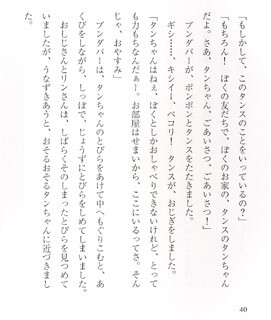
At a glance
- Story: A gentle story about the life of a talking cat in a small seaside town.
- Level: Early elementary school.
- Length: 19 books. 150 – 200 pages each.
Story
The story starts with an old couple who own an antiques shop in a small seaside town. One day the husband rescues a discarded wardrobe. After working to restore it, a cat appears from inside the wardrobe. The couple are shocked to find that ブンダバー the cat speaks.
Level
These books are for children at the beginning of elementary school so there aren’t many kanji. Any kanji above about grade 1 are given furigana, so there is a mix of testing basic kanji, while reinforcing kanji from later grades.
The grammar patters are simple, so the main focus is vocabulary. Of which, there is plenty for everyday events and situations (and talking cats). As it is for young children there is a fair amount of onomatopoeic and mimetic words, which can be useful for more natural conversation.
Also, there are a good number of illustrations that are great for confirming comprehension and to help guess vocabulary from context.
Fewer kanji, basic grammar structures and plenty of illustrations make this book series a great place to start for middle-beginner to pre-intermediate Japanese learners.

ふしぎな駄菓子屋・銭天堂
銭天堂 is an extremely popular series in Japan at the moment and has also been adapted into an anime. The latest book was published in 2020, so it is an ongoing series.
As there is an anime adaptation, reading the books can give the pre-intermediate learner access to some Japanese listening practice. As being familiar with the story will help you better understand the anime.
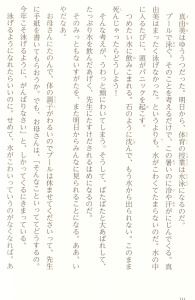
At a glance
- Story: A series of stories about the customers of a magic sweet shop.
- Level: Middle Elementary
- Length: 14 books (so far). 150 to 200 pages each.
Story
Each book is actually a collection of short stories. Each chapter revolves around a new customer who visits a magic sweet shop run by a large mysterious lady called Beniko. The shop appears by magic to those with a burning wish. Beniko then sells them sweets and snacks that helps their wish come true, with varying degrees of success.
Level
The episodic structure is one of the reasons I love this series. While each chapter is different, the stories all follow a basic pattern. This results in smoother comprehension without becoming boring.
Compared to ブンダバー there are more kanji, but furigana remains plentiful. Here the furigana is only given once per page and, in the case of names, is gradually phased out altogether. This is especially useful considering each chapter introduces a new cast of characters.
Due to the greater fantasy elements, vocabulary can be a bit more obscure. But this offers a great opportunity to upgrade your vocabulary from textbooks to real world Japanese.
On that theme, there are some interesting grammar points that are unlikely to appear in many textbooks. This is particularly the case when Beniko speaks with customers as she uses some archaic keigo forms.
The series also offers great practise with more advanced grammar structures that tend to appear in the instructions that accompany the magic snacks.
There are fewer illustrations, but those given are strategically placed to illustrate dramatic moments.
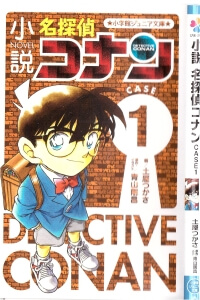
名探偵コナン
Conan is one of the most popular children’s characters in Japan. As the name suggests the character was inspired by Sir Arthur Conan Doyle’s Sherlock Holmes.
This series is a novelisation of the original 1994 manga. I recommend it over the manga as it tells the same story, but with more language practise.

(Copyright Shogakukan)
At a glance
- Story: A genius high-school aged detective solves a series of crimes.
- Level: All grades of elementary school (publisher). Older grades (me).
- Length: 4 books.
Story
The story follows Conan, a genius high-school aged detective who is trapped in his elementary school self. While the cases themselves are standalone, Conan’s search for those responsible for his predicament and his quest to right it continues throughout.
Level
Similar to 銭天堂, this series follows an episodic structure with each volume containing multiple cases. This ensures that the story remains fresh while also carrying over familiar elements.
As the series is marketed for any elementary school grade it has the greatest number of kanji out of the three series. However, all of the kanji have furigana. This is a great setup as it offers excellent reinforcement without slowing reading speed.
The vocabulary tends to be more advanced as science, crime and law are central themes. This is excellent as it helps the reader build a basic vocabulary in these topics.
This final book series helps to build a foundation that will allow you to push your Japanese beyond the pre-intermediate level.
Summary
Reading is fantastic for boosting your language skills, but it can be hard to find material that is both engaging and appropriate for the beginner. But as these three book series prove there is fun and accessible material out there for the pre-intermediate Japanese student.
Now, ignoring the Japanese for a moment, these series are great for another reason. Each is well-known and popular in Japan. By reading them you not only get better at Japanese, but get to know a different part of Japanese culture.
Good luck with your study and I hope you enjoy the rewards of reading in Japanese.
Is there a beginner series you have enjoyed? Let us know below.
Want some tools to boost your study efficiency, so you can read more? Check out 4 essential Japanese study tools
